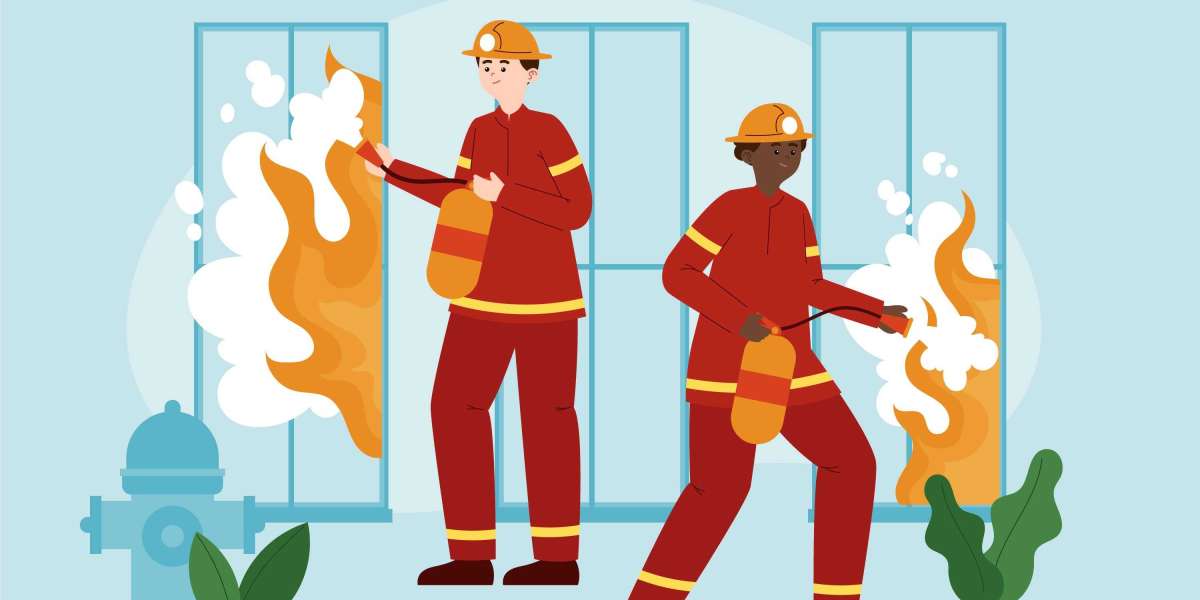Introduction
Welcome to your ultimate guide on Fire Risk Assessment! As we navigate through our daily lives, ensuring the safety of ourselves and our surroundings becomes paramount. The threat of fire is ever-present, making it crucial for every property owner and occupant to prioritize fire safety. A well-executed fire risk assessment serves as a proactive approach to identifying potential fire hazards and implementing effective measures to mitigate risks. This article will serve as your comprehensive safety checklist, detailing essential steps in conducting a thorough fire risk assessment. We’ll explore what fire risk assessment entails, how to conduct one, and the significance of regular assessments in maintaining a safe environment. So, let’s embark on this journey towards better fire safety and risk assessment together!
Understanding Fire Risk Assessment
Fire safety and risk assessment is a systematic process aimed at identifying fire hazards, evaluating risks, and implementing strategies to minimize the likelihood and impact of fire incidents. This assessment is not just a legal requirement; it’s a vital component of any effective fire safety strategy.
The primary purpose of a fire risk assessment is to provide a clear understanding of potential fire risks within a property. This involves evaluating various elements such as:
- Sources of Ignition: Identify potential sources of ignition like electrical equipment, heating appliances, and open flames.
- Fuel Sources: Assess materials that could fuel a fire, including furniture, paper, and chemicals.
- Occupancy Levels: Understand how many people occupy the building and how they could be affected in the event of a fire.
- Means of Escape: Evaluate escape routes and exits to ensure they are adequate and accessible.
A thorough fire risk assessment provides property owners with the knowledge needed to take preventive actions, ensuring the safety of everyone within the premises. This proactive approach helps in complying with fire safety regulations and fosters a culture of safety within the community.
Step-by-Step Guide to Conducting a Fire Risk Assessment
Conducting a fire risk assessment can be broken down into several key steps, ensuring a systematic approach to fire safety and risk assessment:
Identify the Hazards: Walk through your property to identify potential fire hazards. Look for items that can catch fire easily, sources of ignition, and flammable materials.
Evaluate the Risks: Once hazards are identified, evaluate the risks associated with each hazard. Consider factors like how likely a fire could start and how severe the consequences might be.
Implement Control Measures: Develop and implement strategies to reduce risks. This may include installing smoke detectors, providing fire extinguishers, and ensuring that escape routes are clear.
Record Your Findings: Document your findings, including identified hazards, assessed risks, and control measures implemented. This record is vital for future assessments and compliance with regulations.
Review and Revise: Fire risk assessments should not be a one-time activity. Regularly review and update your assessment to reflect any changes in your property, occupancy, or applicable regulations.
Following this step-by-step guide not only ensures compliance with legal requirements but also helps in creating a safer environment for everyone. It empowers property owners to take control of their fire safety through a comprehensive fire risk assessment.
Key Components of a Fire Risk Assessment Checklist
A well-structured fire risk assessment checklist is crucial for an effective evaluation of fire safety and risk assessment. Here are the key components to include in your checklist:
General Information: Document the location, date, and details of the property, along with the assessor’s name.
Fire Safety Management: Assess the effectiveness of fire safety management practices, including training and fire drills.
Structural Features: Evaluate the building’s structure, including fire-resistant materials, compartmentation, and fire doors.
Detection and Alarm Systems: Check the functionality of smoke detectors, heat detectors, and alarm systems.
Firefighting Equipment: Ensure that firefighting equipment like extinguishers, hoses, and sprinkler systems are available, easily accessible, and well-maintained.
Escape Routes and Signage: Evaluate the clarity and accessibility of escape routes, emergency exits, and exit signage.
Emergency Plans: Review existing emergency plans, ensuring they are up-to-date and communicated effectively to all occupants.
Maintenance Records: Maintain records of all fire safety equipment maintenance, training, and previous assessments.
Legal Compliance: Confirm that all fire safety regulations are adhered to, including local fire codes and standards.
Follow-Up Actions: Document any follow-up actions required to address identified risks or deficiencies.
This checklist acts as a practical tool to ensure that no aspect of fire safety is overlooked during your assessment. Regularly updating this checklist will keep your fire safety practices aligned with the latest regulations and best practices.
The Importance of Regular Fire Risk Assessments
Regular fire risk assessments are essential for maintaining a safe environment. The importance of conducting these assessments periodically cannot be overstated:
Changing Environments: Properties undergo changes due to renovations, new occupants, or changes in usage. Regular assessments help identify new risks associated with these changes.
Legal Compliance: Many jurisdictions require periodic fire risk assessments to ensure compliance with fire safety laws and regulations. Failing to conduct regular assessments can lead to legal consequences.
Enhanced Safety Awareness: Frequent assessments promote a culture of safety awareness among occupants. Regular training and reviews keep everyone informed about fire risks and response procedures.
Insurance Requirements: Insurance companies may require regular fire risk assessments as part of their policies. Failure to comply could result in increased premiums or denied claims in case of a fire incident.
Cost Savings: Identifying and addressing potential fire hazards early can save property owners from costly damages and potential loss of life.
Regular fire risk assessments empower property owners and occupants to take proactive steps towards maintaining a safe environment. They also instill confidence that proper measures are in place to mitigate fire risks.
Conclusion
In conclusion, conducting a thorough fire risk assessment is vital for ensuring the safety of your property and its occupants. By following the guidelines outlined in this article, you can create an effective safety checklist that not only meets legal requirements but also fosters a culture of safety awareness. Remember, the goal of fire safety and risk assessment is not just to comply with regulations, but to protect lives and property from the devastating effects of fire.
We encourage you to take action today! Review your fire safety practices, conduct a fire risk assessment, and ensure that everyone in your property is aware of the fire safety protocols. Together, we can create a safer environment for ourselves and our communities. Don’t wait for a fire incident to take action; be proactive and prioritize fire safety today!



